TechRadar Verdict
With the Sony FE 16-25mm F2.8 G you’ve got to be pretty clear about what you’re gaining – and losing. This is a much smaller, much cheaper alternative to the Sony FE 16-35mm f/2.8 G Master II, normally the go-to super-wide-angle zoom for Sony users. But it also sacrifices a lot of focal length at the long end of the zoom range, offering a maximum of 25mm. So is that 16-25mm zoom range enough? Actually, for interiors, landscapes and other subjects this lens might be chosen for, it probably is, assuming you also have a regular standard zoom with you. If you can get past that restricted focal range this lens is very good indeed.
Pros
- +
Compact and light for a constant f/2.8 ultra-wide
- +
Excellent image quality
- +
Declickable aperture ring
- +
Fast autofocus
- +
Way cheaper than 16-35mm G Master
Cons
- -
Just a 1.6x zoom range
- -
Small for its type, but hardly small overall
Why you can trust TechRadar
Sony FE 16-25mm F2.8 G: two-minute review
Cameras are getting smaller, but lenses – especially zoom lenses – appear to be getting bigger. It’s normal now to be shooting with a mirrorless camera with a compact body but a big, hefty standard zoom that makes it feel front-heavy and unbalanced.
Sony, however, has started turning its attention to more compact lens designs, refusing to compromise on performance but instead sacrificing a little focal length or zoom range in exchange for smaller, lighter and perhaps cheaper optics.

The Sony FE 16-25mm F2.8 G is an excellent example. It has the same constant f/2.8 maximum aperture as Sony’s flagship FE 16-35mm f/2.8 G Master II lens, but in a smaller, lighter design that’s also little more than half the price. It doesn’t have that premium G Master label, but Sony’s regular ‘G’ lenses are now so advanced, both optically, physically and in AF technology, that it’s getting increasingly hard to see a difference.
The one compromise in the FE 16-25mm F2.8 G is its focal range. Most lenses in this category are 16-35mm zooms, but this lens stops at a maximum focal length of 25mm. It covers the same ultra-wide angles of view, but is less versatile if you need a more general semi-wide angle of view.
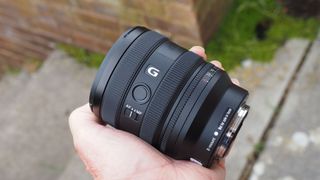
Does this matter? On paper it gives the FE 16-25mm F2.8 G an almost laughably limited 1.6x zoom range, but in practice that may be all you need in an ultra-wide zoom. Whether it's landscapes, architecture or interiors, you're very often going to be shooting in this narrow focal range. If you’re also carrying a regular 24-70mm, 24-105mm or Sony’s new FE 24-50mm f/2.8 G lens, it just means you’ll swap to your standard zoom sooner. You’ll get the same overall focal range from a wide/standard lens combination, just with less overlap in focal lengths.
So is the size saving worth losing that extra focal range. Sort of. The FE 16-25mm F2.8 G is certainly smaller and lighter than a regular 16-35mm f/2.8 lens, but it’s still not exactly small. I tested it on a Sony A7C II, and it still felt pretty big on that. It would balance nicely on a regular A7 body, though.
Sony FE 16-25mm F2.8 G: price and release date

At the time of writing, the Sony FE 16-25mm F2.8 G is on pre-order, but with supplies expected around May 10th – so by the time you’re reading this, it’s probably available amongst the major resellers. The US price is around $1,198, in the UK it’s £1,249, while in Australia it's AU$2,189. You wouldn’t call it a cheap lens, but it’s way cheaper than Sony’s other constant f/2.8 ultra-wide G Master zooms.
It looks very good value for an own-brand lens with a sophisticated optical construction, fast and silent dual linear AF motors and excellent external controls. It’s also weather-sealed with a fluorine-coated front element to repel oil, grease and water.
Sony FE 16-25mm F2.8 G: design
Sony certainly hasn’t stinted on build quality and controls. This lens uses ‘engineering plastics’ to keep the weight down, but there’s no harm in that and the finish is excellent. The aperture control ring is first rate too, with firm and positive clicks between each 1/3 aperture setting and an extra firm detent at f/22 to switch it to auto aperture control.
If you’re shooting video and changing aperture/iris settings while filming, you can use a Click On/Off switch on the underside to enable stepless silent aperture adjustment.

Focusing is so fast as to be practically instantaneous, and silent too. This is where you’re likely to notice most difference between Sony’s newer own-brand lenses and cheaper third-party alternatives. There’s a slightly stiff AF/MF switch on the barrel, and in manual focus mode the focus ring at the front of the lens feels a fraction light but offers progressive and accurate focus control.
This lens is compatible with Sony’s focus breathing compensation mode, depending on the camera you’re using. The focus breathing doesn’t seem particularly strong, though objects do appear to grow somewhat smaller as they go out of focus.
There’s one other external feature worth highlighting – the FE 16-25mm F2.8 G has a very compact front element that doesn’t protrude, so it’s perfectly possible to attach regular filters and it has a pretty common 67mm filter thread, so you may not have to buy any outsize filters just for this lens.
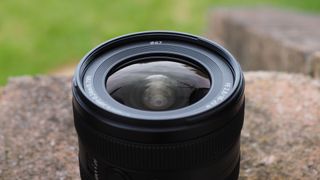
Focusing is full internal, and while there is a change in the length as you zoom from one end of the range to the other, it’s only a few millimeters, so if you’re balancing a gimbal you probably only need to do it once and not keep changing it for different zoom settings.
The limitations of this lens's focal range are obvious, but its build quality, handling, features and performance are a pleasant surprise, and it certainly feels as if you're getting your money's worth.
Sony FE 16-25mm F2.8 G: sample images

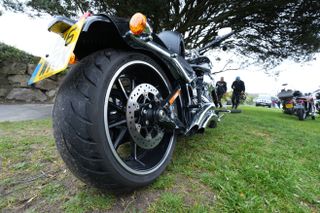









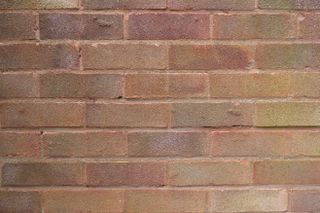

Should I buy the Sony FE 16-25mm F2.8 G?
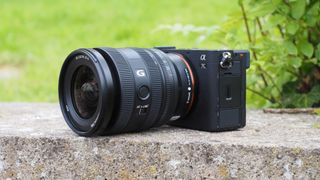
Buy it if...
You want a portable, high-quality ultra-wide zoom
On paper this lens looks a little short on focal range, but in practice it fits in perfectly alongside a regular standard zoom. It's not that big, it's not that expensive, but it is very good.
You need a good, ultra-wide video lens
The Sony FE 16-25mm F2.8 G has a heck of a lot going for it, with speedy and silent AF, stepless aperture control, great gimbal balance and focus breathing compensation should you decide you need it.
You're carrying a standard zoom too
The zoom range tops out at 25mm, but that's right where standard zooms start, so you're not missing out on any focal lengths in between.
Don't buy it if...
You're looking for a single walkaround travel lens
Where a regular 16-35mm zoom is long enough for classic street photography at full zoom, the 16-25mm comes up a little short, so you might have to commit to two lenses not one.
You only want ultra-compact lenses
The Sony FE 16-25mm F2.8 G is small, but not THAT small. It's all relative, and if you do want lenses that are actually tiny, then look at the Sony FE 24mm F2.8 g, 40mm F2.5 G and 50mm F2.5 G primes instead.
You need extreme angles of view
The 16mm widest focal length of this lens is not as wide as you can go. If you need extreme angles of view for architecture, astro or interiors, a 12-24mm or 14-24mm alternative will go wider still
How I tested the Sony FE 16-25mm F2.8 G

The weather was not kind during testing, so I mixed indoor and outdoor shots. The indoor shots were good for checking angles, of view, distortion and close focusing capability, while the outdoor shots were at a motorcycle meet that tested the practicality of this 16-25mm zoom range for this kind of walkaround shooting. I also did a brick wall test at both ends of the zoom range to check for optical quality across the aperture range.
I also paid attention to the autofocus performance, both for speed and silence, to see how effective Sony’s dual linear motor setup actually is, and I paid particular attention to the feel and operation of the external controls, as these are a significant selling point for this lens.
I also wanted to find out how the Sony FE 16-25mm F2.8 G handled on the smaller A7C series body (OK, as it happens), whether it was especially nose-heavy on a tripod and how easy it was to balance on a gimbal. My Ronin SC had a long enough camera plate and fore-aft adjustment to cope easily, and the very small lens extension when zooming meant no rebalancing was necessary.
- First reviewed May 2024

Business ChatGPT users can now pull in files from Google Drive, OneDrive and more

GTA 6 will launch late in 2025 according to Take-Two financial report

OpenAI's ChatGPT might soon be thanking you for gold and asking if the narwhal bacons at midnight like a cringey Redditor after the two companies reach a deal
